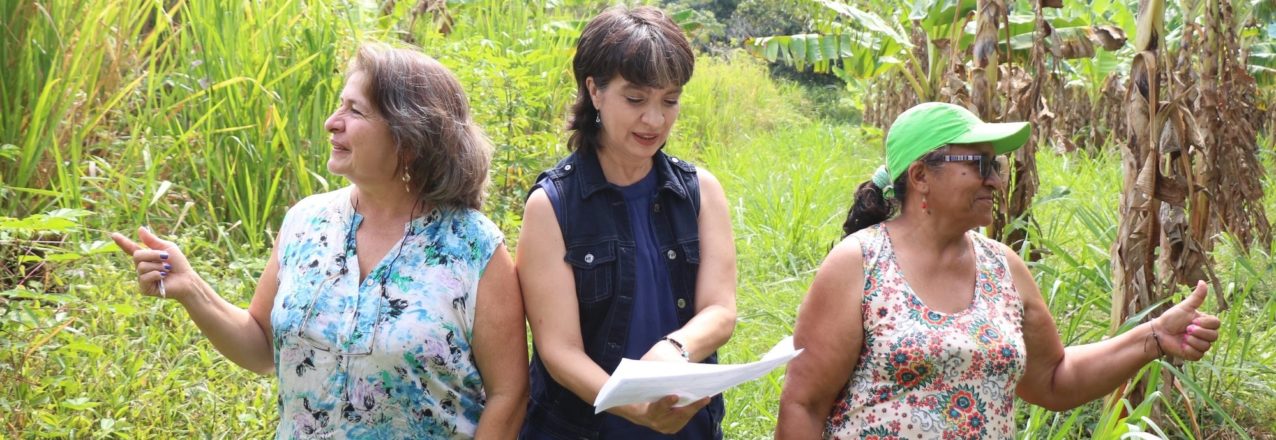Good governance is a critical threshold condition for environmental stewardship. USAID’s land and resource governance programming incorporates environmental conservation from the bottom up. In the context of climate change, growing land and resource scarcity and concerns over resource conflict, secure tenure rights and effective governance of these rights have become all the more important. A growing body of evidence shows the extent to which land and resource governance is connected to environmental outcomes. (See the IPCC Special Report on Climate Change and Land and IPBES Assessment Report on Land Degradation and Restoration.) Human decisions over land and resource use can lead to land degradation, desertification and climate-induced disasters; conditions that in turn cause human suffering including food loss, malnutrition, and displacement.
Clear rights and good governance provide a starting point for change. Providing safe, long-term tenure rights encourages people living and depending on land to invest in sustainable practices, and can reduce incentives to exploit resources or encroach into new areas. Decentralizing land and resource governance to communities is a critical step toward improved environmental outcomes, and even more so when this transfer empowers traditional resource users. The Food and Agriculture Organization of the United Nations (FAO)’s recent synthesis report, which reviewed over 300 studies completed over two decades, indicates that transferring land and resource rights to Indigenous and Tribal Peoples can cut deforestation rates in half. Transparent and inclusive land and resource governance also helps to reduce conflict and ensure broad-based benefits from the use of common resources.
USAID’s land and resource governance programming:
1) Strengthens tenure rights to increase climate smart investments and reduce pressure on forests. By supporting secure land tenure through land rights formalization projects and improved governance, USAID encourages long-term investments in environmental stewardship, such as soil conservation and tree planting. When rights are recognized and recorded, it is also easier for governments and communities themselves to monitor uses and promote accountability. USAID is working on land rights formalization programs in several countries rich in environmental resources, such as Colombia, Ghana, Liberia, Tanzania, and Zambia. In Ghana, USAID will be evaluating impacts of land tenure efforts on carbon emissions.
2) Promotes women’s land and resource rights and gender equal resource governance. Women are underrepresented in land and resource governance at almost every level in many countries, and often face additional gender bias at the local level under decentralized systems. Tackling the challenges of resource scarcity and changing climate conditions will require vibrant participation of diverse voices in the community, including both women and men. Gender inclusive land and resource governance also provides the foundation for successful and equitable climate change adaptation programs, and mitigation programs entailing Payment for Environmental Services (such as REDD+). USAID is working with the government of Zambia on a breakthrough program to bolster women’s participation in the governance of wildlife resources through Community Resource Boards, and training women as community wildlife scouts.
3) Supports strong local resource governance bodies to ensure effective environmental stewardship. The transfer of land and resource governance to local communities is taking place in many countries around the world. USAID’s 2020 Policy on Promoting the Rights of Indigenous Peoples reinforces the central role that Indigenous Peoples play in the Agency’s programming for land and resource governance. USAID programs supporting formalization of land and resource rights for Indigenous Peoples in Bolivia and Peru, for example, demonstrate that communities who live in and depend on forest and other ecosystems do the best job taking care of these resources. For over 20 years, USAID has worked to support Indigenous land and resource rights in Bolivia; from 2000 to 2012, formal recognition of these lands resulted in an average deforestation decrease of 286 percent. The carbon emissions reduction associated with this result was equivalent to removing over 1.6 million cars from the roads for one year. In Peru, USAID supported more than 1,200 Indigenous communities to secure titles to their land and resources; when communities received titles, deforestation decreased by 97 percent.
4) Builds stability in fragile and post-conflict states. By focusing on land tenure security in post-conflict states, USAID helps to ensure political stability that will, in turn, enable good stewardship of environmental resources over time, and help to reduce the chance of violent conflict and war that wreaks havoc on the natural environment. Insecure land rights can lead to displacement and grievance, which contribute to conflicts large and small. Secure and equitable land rights can be a pillar of political stability and broad-based economic development. USAID has a historically strong land and resource governance focus in fragile and post-conflict states, and currently has programs in Colombia, Liberia, and Mozambique.
5) Reforms artisanal and small-scale mining (ASM) to reduce conflict and improve environmental impact. By partnering with countries to formalize and regulate artisanal and small-scale mining (ASM), USAID fosters ASM supply chains that are not only legal, but also environmentally and socially responsible. USAID is working closely with the U.S. Departments of State, Labor, and Commerce; the U.S. Geological Survey (USGS); and the Environmental Protection Agency to tackle the complex array of ASM-related development challenges.


